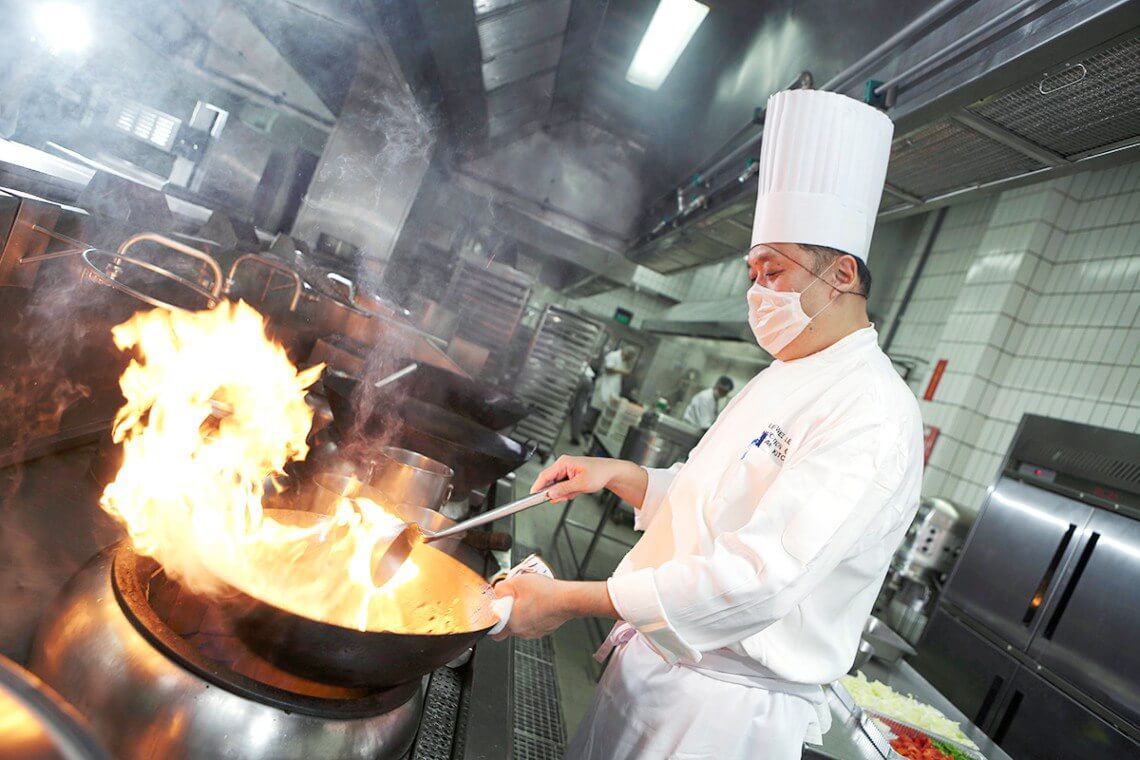The Airline Catering Association has released new guidelines for the safe preparation of food in a bid to reassure would-be flyers that the skies are safe again
New guidelines released by the Airline Catering Association (ACA) covering food production for in-flight consumption are focused on reassuring passengers that it is safe to return to the skies.
ACA managing director Fabio Gamba says the new guidelines, known as the 4Ps, use advice from the World Health Organisation (WHO) and other agencies and cover four areas: people; premises; policies, processes and procedures; and procurement.
While they establish global advice for airline catering companies on best practice in the Covid-19 era, he argues their key benefit will be in providing reassurance to consumers, many of whom remain uncertain about flying.
Gamba says: “Obviously passengers are the target audience and we are telling them that we know these are difficult times, we know that they need to be reassured on how the industry is safe and that it (an airline)can safely bring them from A to B.
“This includes everything that happens during the journey and includes food; whatever you’re eating, and the conditions in which you are eating it, are safe.”
He believes the ACA’s message should also mean one less thing for passengers to worry about as they will already have concerns the minute they set foot in an airport, from wondering whether they will face a temperature check, and to when they will need to wear their face masks.
Gamba says: “One of the reasons we are seeing such a long and late recovery is that there is still a sense of the unknown and uncertainty among the travelling public. If you can tackle that with clear messages it can only help.
“Everyone agrees that bringing reassurance to the passenger is at the moment the most important thing you can achieve.
“It is not about food safety, which is not impacted via the pandemic … and food is not a vector for Covid-19. It’s about health and security and other things.”
And that, Gamba argues, is the other reason behind the ACA’s decision to launch the guidelines which will help catering companies around the world adapt to the new regulations and requirements in their own workplaces.
He says: “We wanted to provide all the caterers worldwide the best practices. On top of that a lot of kitchens have been mothballed for a few months, so it’s also about how to restart the activity and should really help businesses.”
Gamba adds the guidelines are also flexible enough to take account of the fact that Covid-19’s impact across the world has varied greatly, as has each individual government’s reaction to it.
He says: “It’s based on a risk assessment, depending on the threat (of Covid-19) to a country you can adapt your protocols.”
Gamba believes the document will also prove invaluable to smaller catering companies, many of which will not have the time or staff available to monitor the latest advice and understand how best to implement it.
Ultimately, he argues this will bring consistency across the industry, so further reassuring consumers that not only is flying safe in the new era, but they can look forward to a meal or two once they are on board.
Cleaning Up
The Airline Catering Association (ACA) has adopted a new set of safety guidelines to help members navigate the ongoing Covid-19 pandemic.
They are built around four guiding principles, known as the 4Ps, which cover people; premises; policies, processes and procedures; and procurement.
The aim of the guidance is to give members the best advice on both ensuring proper risk assessments can be undertaken in their own businesses, while continuing to supply safe in-flight catering.
The advice breaks down accordingly:
People
The guidelines specify when personal protective equipment (PPE) is necessary, according to best practice provided by authorities including the World Health Organisation (WHO), and both the safe wearing and disposal of it.
Advice also covers employee training, personal hygiene, screening, inspection and surveillance measures and how to support high-risk employees as best as possible.
Premises
Focusing on physical distancing, the advice covers how best to address specific risks and logistical factors unique to each catering location.
In particular, it considers monitoring work stations to ensure they are safe with equipment properly spaced and reviewing worker numbers in everything from offices to canteens. It also includes how to ramp up or ease off protocols according to the local pandemic risk level.
Policies, Processes and Procedures
Much of this revolves around the American Centers for Disease Control and Prevention (CDC) recommendations, with advice on reducing employee transmission while maintaining a healthy work environment.
Advice also covers third-party access to a facility, cleaning and disinfection and working with suppliers to best effect.
Procurement
The guidelines focus on ensuring adequate stocks of PPE are available with contingency options while ensuring plans are in place should a regular product or service supplier suddenly find itself in trouble.
Changing customer requirements are also spotlighted in order to ensure effective supply chain planning in a time when circumstances can change rapidly.



